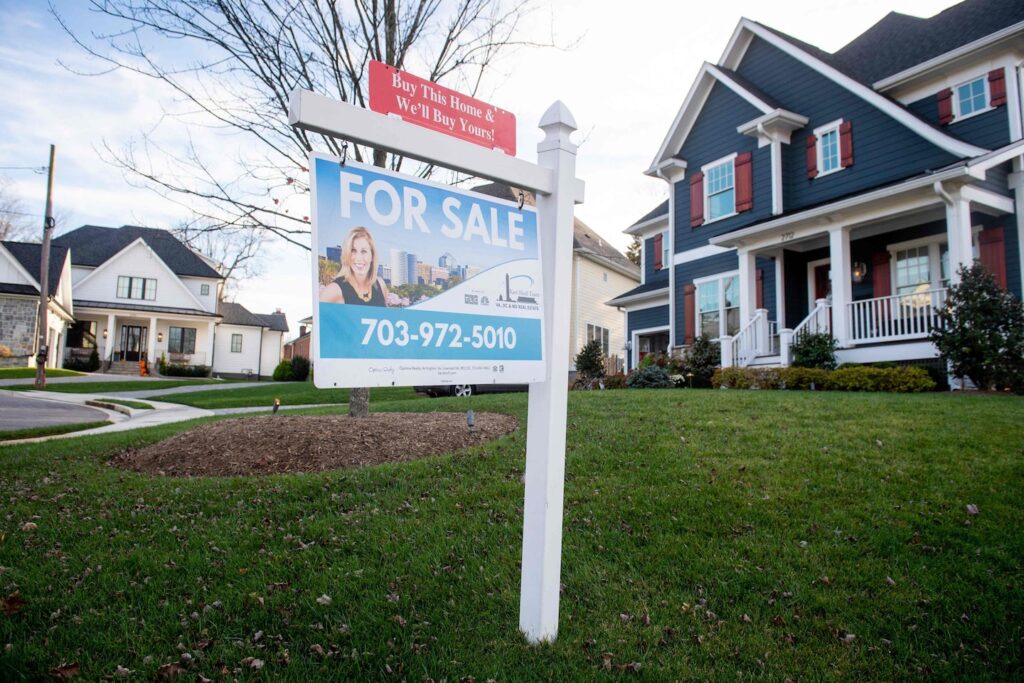Home prices, meanwhile, logged their first year-over-year decline since 2012, with the median U.S. home price dipping 0.2 percent to $363,000.
The jump in sales activity confirmed some economists’ assertions that the U.S. housing market had already reached the bottom of its year-long slump.
“The housing recession is over as spring comes early this year and has realtors shouting hallelujah,” said Chris Rupkey, chief economist at FWD Bonds, a New York-based markets research company.
The housing slowdown happened as the skyrocketing prices of 2020 and 2021 collided with rising interest rates, making the home-buying process less affordable across the board. Home-buying activity slowed significantly throughout 2022 as the Federal Reserve pumped the brakes on the economy and the typical mortgage rate more than doubled, climbing as high as 7.08 percent.
The housing market is especially sensitive to interest rate fluctuations because most people acquire new homes with the help of a home loan, which can entail tens or hundreds of thousands of dollars in interest on top of the price of the home. That means the Fed’s rate hikes added hundreds of dollars every month to the cost of a new mortgage, convincing many would-be homeowners to stay out of the market. But the average mortgage rate had fallen back to 6.09 percent by early February, enticing some to resume their housing searches.
“Conscious of changing mortgage rates, home buyers are taking advantage of any rate declines,” NAR chief economist Lawrence Yun said in a press release. “Moreover, we’re seeing stronger sales gains in areas where home prices are decreasing and the local economies are adding jobs.”
Prices varied significantly from one region to the next. In the South and Midwest, home prices increased by 2.7 percent and 5 percent respectively over the past year, according to NAR.
Prices fell in the Northeast, where the median home price dropped 4.5 percent from the previous year to $366,100, and in the West, where the median home price dropped 5.6 percent to $541,100.
The increase in selling activity was driven by the West, which saw home sales increase 19.4 percent.
The path of prices moving forward could be heavily dependent on what happens with interest rates, analysts say. Rates fell again this past week as bank failures roiled the financial system.
The Federal Reserve is meeting Tuesday and Wednesday to consider whether more rate hikes are needed to tame inflation. A decision on how much to change interest rates is expected Wednesday.
Federal Reserve Chair Jerome H. Powell indicated in remarks to Congress that more aggressive rate hikes might be needed, but the failure of two tech-focused banks has led to speculation that the Fed might take a more cautious approach.
Ali Wolf, chief economist at Zonda, wrote in a Tuesday blog post that the strong spring selling season shows how the demand for housing can be sensitive to interest rates in real time, as buyers wait for the perfect moment to pull the trigger on long-held purchasing plans.
“The new question is — will consumers continue to celebrate the downward move in mortgage rates, or will broader economic concerns push them back to the sidelines?” Wolf asked.
Zillow Group senior economist Orphe Divounguy said that the Fed is trying to “engineer a healing of the economy” but that it needs more homes to be available for sale for that healing process to succeed. In the meantime, lower rates and lower prices could spur additional buying activity, he said.
“If you get a combination of prices coming down and a big decrease in mortgage rates, you could see a lot of activity,” Divounguy said in a recent interview.

